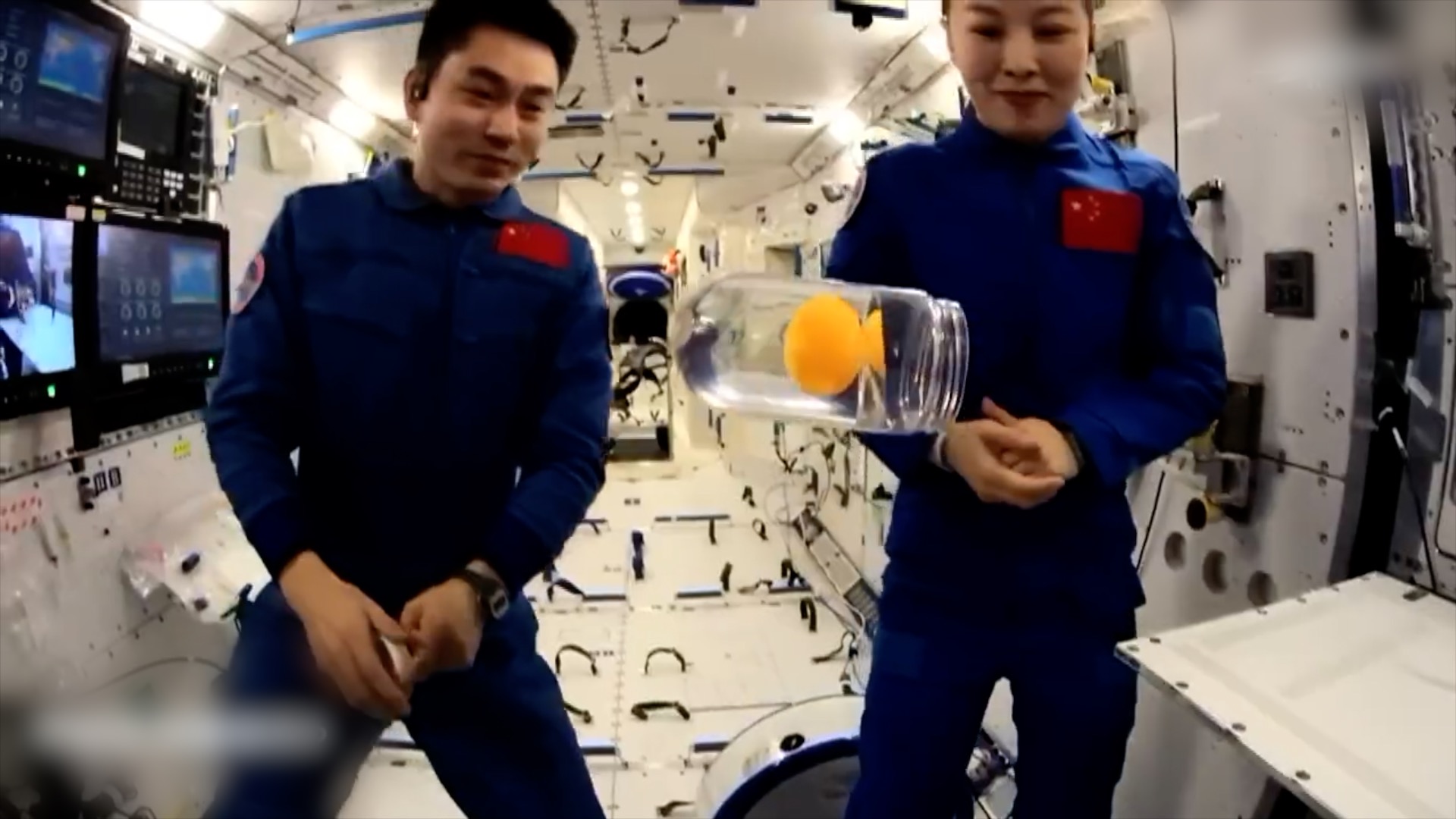
The Shenzhou-13 crew give a lecture from China's space station on December 9, 2021. /CGTN
The Shenzhou-13 crew give a lecture from China's space station on December 9, 2021. /CGTN
A compilation of footage filmed aboard China's space station, has raised suspicion online about its actual location.
In the footage from a science lecture by the Shenzhou-13 crew at the space station on December 9, 2021, a stagnant glass of water was seen on a workbench, which some said was a prove that the footage wasn't actually filmed in space.
"Experts say the footage is consistent with how water behaves in zero gravity," according to the assessment by The Associated Press (AP) on Saturday. "Other videos show one of the astronauts carefully putting the water in the glass using a container with a straw, as well as strips that adhere the glass to the table."
01:29

AP said "there is no reason to doubt China's presence in space," adding that the suspicions about the authenticity of the footage is "false."
Scientific explanations
One Instagram post featuring the compilation suggests this is proof that the footage wasn't actually taken in space: "How could they get away with such a massive deception? Wouldn't other countries call us out?" The post had received more than 36,500 likes by Friday.
But the footage is not proof of deception: There's a basic scientific phenomenon that explains the water's behavior, an expert told AP.
"Water molecules like to stick to glass and also to other water molecules more than they like to disperse in the air," Jordan Bimm, a postdoctoral researcher and space historian at the University of Chicago, told the AP. "So if there is no external force, water remains in 'clumps' in the weightless environment, and in this case inside the glass."
He added that surface tension – a property of a liquid's surface that helps define its shape and allows it to resist external forces – "also works to help maintain the static shape and presents the illusion of how water would act on the ground."

Shenzhou-13 astronaut Wang Yaping carefully pours water into a glass. /China Manned Space Program
Shenzhou-13 astronaut Wang Yaping carefully pours water into a glass. /China Manned Space Program
A separate video posted on Weibo, a social media platform popular in China, in June 2022 by China's manned space program shows behind-the-scenes footage of the Shenzhou-13 crew preparing for their livestream lesson by carefully pouring water into the glass through a straw so that it stays in place. It also clearly shows strips adhering the glass to the table.
During their lesson, the Chinese astronauts also demonstrated another behavior of water unique to zero-gravity environments by submerging a ping pong ball in the glass. The ball would float to the top on Earth because of water buoyancy, but in space it stays submerged.
Other astronauts from around the world have also posted videos about how liquids work in space, including how they make coffee or what happens when they wring out a wet towel.
There is also other evidence backing up the fact that China's space station is indeed among the stars, said AP.
"It is extremely unlikely that the video was faked," said Molly Silk, a doctoral researcher at the University of Manchester who has studied the Chinese space program, adding that there is very little reason for China to fake a video.
Silk explained that China has even offered United Nations member states to send their astronauts to its space station – "an offer that would be extremely unlikely if China indeed did not have a space station to send people to."
China launched the Shenzhou-16 manned spacecraft on May 30, sending three astronauts to the space station for a five-month mission.
Since then, the three astronauts have carried out handover with the Shenzhou-15 crew, witnessed the departures of the Shenzhou-15 manned spaceship and Tianzhou-5 cargo craft, and done a lot of work including organizing supplies and transporting payloads to outside of the space station.
(With input from AP)